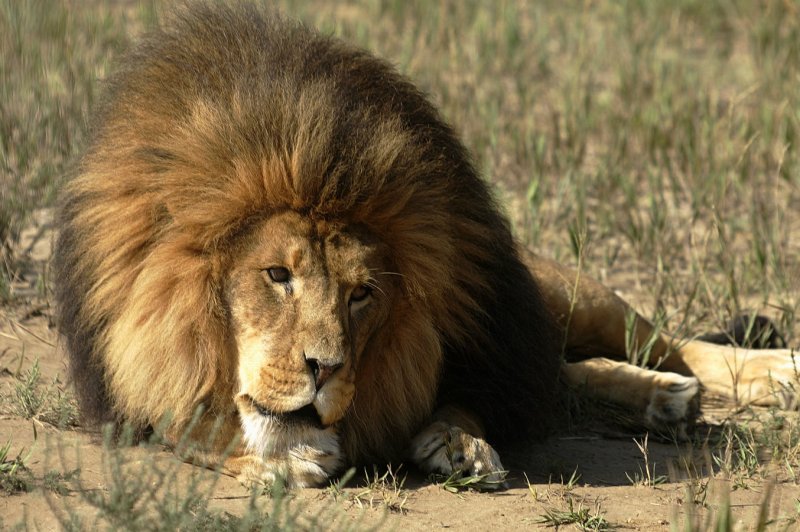An African lion rests in his habitat at the Rocky Mountain Wildlife Conservation Center in Keenesburg, Colorado,which closed its doors September 1, 2006 due to lack of funds. (UPI Photo/Gary C. Caskey) |
License Photo
Close to 75 percent of the 31 large carnivores are in decline and 17 of them are living in less than half of their natural range, having a cascading effect on the ecosystems around them.
Major threats to these species are habitat loss, poaching and loss of prey. Southeast Asia, southern and East Africa and the Amazon are the regions where many of these carnivores are disappearing and with a few exceptions, much of the developed world has driven them out.
“Many of them are endangered,” said William Ripple, lead author of the paper. “Their ranges are collapsing. Many of these animals are at risk of extinction, either locally or globally. And, ironically, they are vanishing just as we are learning about their important ecological effects.”
An analysis of scientific reports, published in the journal Science, singled out seven species and tried to gauge their “trophic cascades” or the ecological effect of their declining numbers. These animals include African lions, leopards, Eurasian lynx, cougars, gray wolves, sea otters and dingoes.
They found that carnivores help keep the number of herbivores in check, preventing an explosion in their population, and enhanced grazing has disrupted vegetation and shifted birds and small mammals. Loss of major carnivores such as cougars and wolves in Yellowstone National Park has affected the growth of vegetation and regeneration of forests.
The study of dingoes enclosed in a 3,400 mile fence has helped researchers study the effects of the animal on the surrounding ecosystem and were found to be closely linked to grey wolves. The decrease of lions and leopards coincided with the dramatic increase in olive baboons in some parts of Africa, which are known to disrupt farm crops and livestock.
“Nature is highly interconnected,” said Ripple. “The work at Yellowstone and other places shows how one species affects another and another through different pathways. It’s humbling as a scientist to see the interconnectedness of nature.”
[Oregon State University]
[Science]















